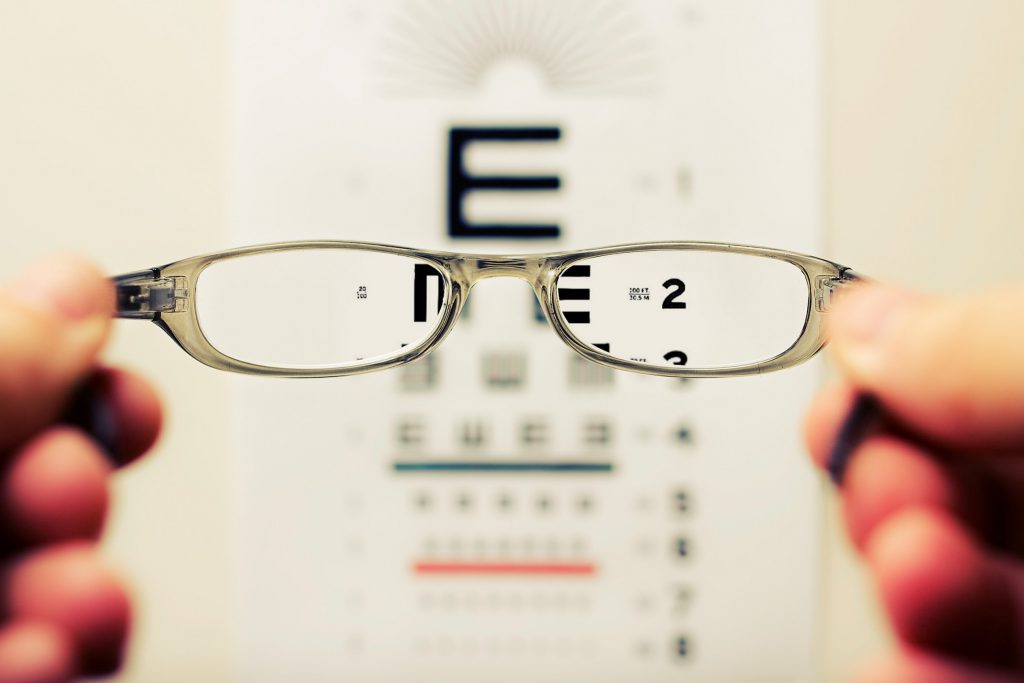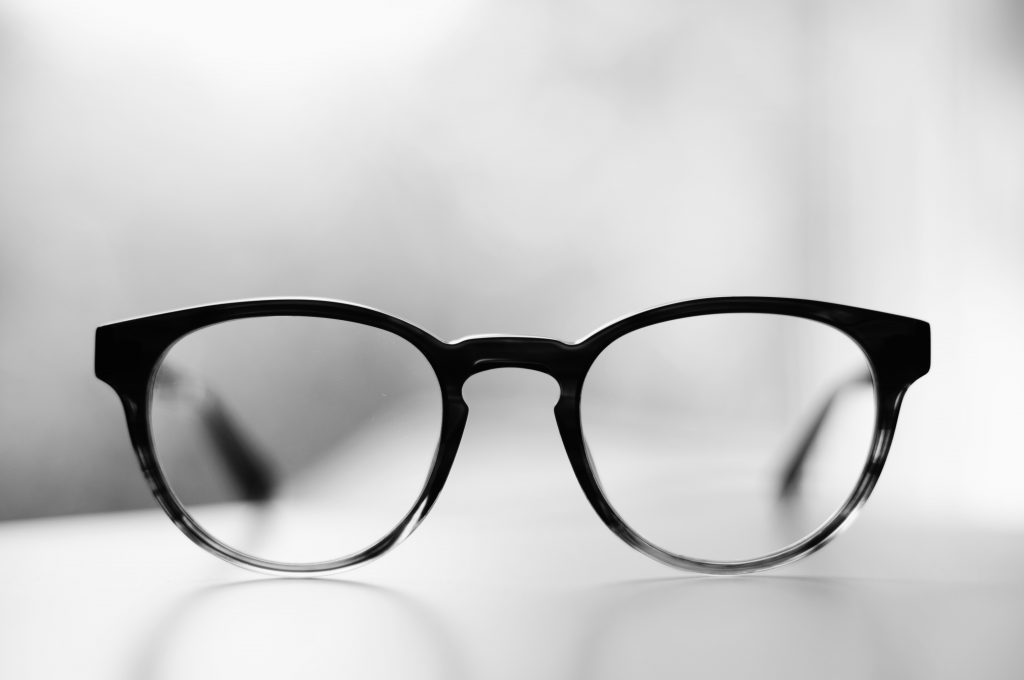In the ever-evolving world of eyewear, understanding the different kinds of glasses is key to optimizing your digital wellness and style. We’re here to help you feel confident choosing the right types of eyeglasses in this guide.
Whether you’re exploring the protective prowess of blue light and amber glasses, seeking the clarity of prescription lenses, or indulging in the fashion-forward allure of non-prescription eyeglasses, you gain access to the best selection here at Felix Gray.
As you journey through the diverse world of glasses types, discover how Felix Gray blends cutting-edge science with trendsetting designs. Get ready to find your perfect pair, where functionality meets flair, and every choice is a step towards a better, brighter you!
All the Different Types of Glasses Explained
We’re not going to waste any time getting into the different types of glasses. Below, we’ll unveil the most common glasses types and talk about what makes them unique. Then, we’ll help you choose among the different kinds of glasses to pick the perfect style!
Blue Light Glasses

Blue light glasses are specifically designed to mitigate the effects of blue light exposure from digital screens. Blue light, a high-energy visible light, is known for its short wavelength, which can be more straining to the eyes compared to other forms of light.
How do blue light glasses work, though? They are equipped with lenses that filter and block a portion of this blue light, particularly the most harmful wavelengths (around 415-455 nm).
The primary benefit of reducing blue light exposure is to alleviate digital eye strain, characterized by symptoms like headaches, blurred vision, and dry eyes.
Furthermore, minimizing blue light exposure can help maintain healthy sleep patterns, as blue light can disrupt the body’s natural circadian rhythms. This is especially important before bedtime.
This style is not just for those who experience discomfort, though. They’re a proactive measure for anyone who spends significant time in front of screens, aiding in long-term eye health.
We have the best selection of blue light glasses here at Felix Gray. You can also gain tips on how to clean blue light glasses to protect your investment. That being said, we want to introduce the next style on our list of glasses types: a specific subset of blue light-blocking glasses!
Amber Glasses
Amber-tinted glasses are a specialized type of blue light glasses, featuring a distinct amber tint in the lenses as the name suggests. This tint is engineered to filter out a higher percentage of blue light compared to standard blue light glasses.
The amber color effectively blocks more blue light, providing an enhanced level of protection. This makes them particularly suitable for use in the evening hours, as they can help reduce exposure to the blue light that disrupts melatonin production, a hormone critical for sleep.
Users of these eyeglass styles often report better sleep quality and reduced eye strain when using amber glasses in the hours leading up to bedtime.
While they serve a specific function, these glasses also come in various styles and designs, making them a practical and stylish accessory for those looking to minimize their blue light exposure in the later parts of the day.
Reading Glasses
You’ve likely heard of this style in the past, but what are readers exactly? These are designed for individuals experiencing presbyopia, a common age-related condition that makes it difficult to see objects up close.
These eyeglass styles provide magnification, which helps in reading and other close-up tasks, making small text and fine details clearer and sharper.
Unlike single prescription lenses (a glasses type we’ll get to in a moment), reading glasses are typically available in standard magnification levels, measured in diopters. The right level of magnification depends on the user’s specific needs and the extent of their presbyopia.
But, what are computer reading glasses specifically? This is one of the newest types of eyeglasses to hit the market. Computer reading glasses incorporate blue light filtering technologies, addressing the dual concerns of close-up vision clarity and protection from digital eye strain.
Whether you need standard readers or computer readers, it’s important to choose the correct magnification, as the wrong level can lead to discomfort or further eye strain.
Prescription Glasses

Prescription glasses are custom-made eyewear, tailored to correct various vision impairments. They are essential for individuals with refractive errors like myopia (nearsightedness), hyperopia (farsightedness), astigmatism, or presbyopia.
The lenses in these glasses are crafted based on an individual’s specific vision prescription, ensuring that each user receives the correct degree of correction for their unique vision needs.
The type of prescription lens needed depends on the nature and complexity of the vision problem. So, let’s unpack some of the different kinds of glasses that fall under this umbrella below.
Single Vision
Single vision lenses have the same optical power across the entire lens. They are the most common type of prescription lenses, designed to correct a single vision condition, such as myopia or hyperopia.
These eyeglass styles help focus light correctly onto the retina, providing clear vision at a specific distance. They are suitable for people of all ages who need glasses for either distance vision, reading, or computer work.
Bifocals
Bifocals are designed for individuals who need assistance with both near and distance vision.
These lenses have two distinct optical powers – the upper part for distance vision and a lower segment for near vision tasks, like reading. The division between the two sections is usually visible as a line across the lens.
These glasses types offer a practical solution for presbyopia, allowing users to have clear vision at different distances without the need to switch between multiple pairs of glasses.
Trifocals
Trifocals take the concept of bifocals a step further by adding a third section. These lenses have three sections of different optical powers for near, intermediate (arm’s length), and distance vision.
The intermediate section is particularly useful for tasks like computer work, where the object is neither too far nor too close. Trifocals are beneficial for those who require a broader range of vision correction, especially in the presbyopic age group.
Progressives
Progressive lenses offer a seamless transition between multiple lens powers for near, intermediate, and distance vision.
Unlike bifocals or trifocals, progressive lenses don’t have visible lines separating the different sections. This provides a more natural visual experience, allowing the wearer to shift focus between distances smoothly.
They are aesthetically pleasing and cater to a full range of vision needs, making them a popular choice among those with presbyopia who seek both functionality and style in their eyewear.
You can learn more about prescriptions in our blog. We have resources on the OD eye meaning, 20/10 vision, glasses prescription expiration by state, and more. Otherwise, let’s look at the polar opposite of these types of eyeglasses: unprescribed glasses.
Unprescribed Glasses
Unprescribed glasses, often referred to as non-prescription glasses for fashion or plano glasses, are designed primarily for aesthetic purposes or to provide protection against elements like blue light and UV rays.
These eyeglass styles don’t have corrective lens power but can include features like blue light filtering, which is beneficial for individuals who spend substantial time in front of digital screens but don’t require vision correction.
These glasses can also come with anti-reflective coatings to reduce glare, enhancing comfort during prolonged screen use.
Additionally, unprescribed glasses are a fashion accessory, allowing individuals to enjoy the style and look of wearing glasses without impacting their natural vision.
Sunglasses

Sunglasses are not just a fashion statement; they play a crucial role in protecting our eyes from harmful ultraviolet (UV) rays. Prolonged exposure to UV rays can lead to eye problems like cataracts and macular degeneration.
Quality sunglasses offer UV protection, blocking out 99% to 100% of both UVA and UVB rays. They also reduce glare, making activities like driving or being on the water safer and more comfortable.
Sunglasses come in a variety of styles, lens tints, and shapes, providing options to suit different face shapes and personal preferences. You can even find prescription sunglasses for those who require vision correction, offering the benefits of UV protection while also correcting vision impairments.
Colorblind Glasses
Last but not least on our list of the different types of eyeglasses are colorblind glasses. So, how do colorblind glasses work?
These eyeglass styles contain specially tinted lenses that can help people distinguish between colors more easily. They work by filtering out specific wavelengths of light, enhancing the contrast between different colors.
While these glasses don’t cure color blindness, they can significantly improve the ability to perceive and differentiate colors, making everyday tasks and experiences more vibrant and distinct.
It’s important to note that the effectiveness of colorblind glasses varies depending on the type and severity of color blindness, and they may not work for everyone. However, they offer a remarkable enhancement in seeing and appreciating the full spectrum of colors in their environment for many individuals.
A Word on Glasses Frames Styles

There you have it – all the different kinds of glasses! But, let’s now turn our attention to one of the most prominent parts of glasses from a comfort and style standpoint: the different types of eyeglasses frames.
Various Types of Frames
We wrote a details guide like this one highlighting the different types of glasses frames if you want the full scoop. Otherwise, here’s an overview of the most common types of glasses frames:
- Full-Rim: Offer maximum lens protection with a bold look, suitable for all lens types.
- Half-Rim: Cover only the top or bottom of the lens, lighter and more subtle.
- Rimless: Lenses attached directly to the bridge and temples, ultra-lightweight and almost invisible.
- Wayfarer: Trapezoidal shape with thick rims, classic and versatile.
- Cat-Eye: Upswept angles for a vintage, chic look.
- Round: Circular lenses, ideal for square and oval faces with a retro vibe.
- Aviator: Thin metal frame with double bridge, timeless and sporty.
- Square: Angular and strong lines, create a statement for round or oval faces.
- Geometric: Unique shapes like hexagons or octagons for a modern style.
Choosing the Right Frames for Your Face
So, what shape is my face for glasses? Generally, the frame shape should contrast with the face shape for balance. For example, round faces often benefit from angular frames, while square faces are complemented by rounder frames.
The frame size should be in scale with the face size. Skin tone also plays a role; frames should either complement or pleasantly contrast with one’s skin tone.
Ultimately, these guidelines just provide a starting point. Choosing frames is also about personal expression and comfort. The best frame is one that makes the wearer feel confident and comfortable.
We encourage you to use our virtual glasses try-on and see what resonates with your unique face shape and preferences! This is just one of the reasons Felix Gray is your trusted provider of all the different types of glasses…
Find Whatever Types of Eyeglasses You Need at Felix Gray, Where Science Meets Style!

No matter which of the glasses types you need, you can count on Felix Gray. We blend scientific innovation with contemporary style, offering you the best of both worlds – glasses that look great while simultaneously enhancing your day-to-day life.
Our glasses offer superior protection against digital eye strain, with lenses designed to filter significantly more blue light than standard ones. The Amber lenses are particularly effective, filtering 23 times more blue light, ideal for nighttime use.
Beyond functionality, our range of eyeglasses combines cutting-edge design with diverse styles, ensuring that every pair is as fashionable as it is protective. The only question is, which of the different kinds of glasses is right for you?
Hopefully, this breakdown of the different types of eyeglasses left you with complete clarity. If not, you can learn about what glasses are in style in our blog if you want a personalized recommendation as we wrap up our guide to the different glasses types.
The perfect pair is a click away at Felix Gray!
Final Thoughts on the Different Types of Eyeglasses
From anti-glare blue light glasses to prescription glasses, there are so many different kinds of glasses to choose from. You should feel confident in which of the different glasses types is right for you now, though.
Felix Gray stands out by offering this variety with a focus on eye health and contemporary designs. Choose from our range of eyeglass styles, knowing that each pair is crafted to enhance both your vision and style, making Felix Gray the go-to choice for your eyewear needs!
